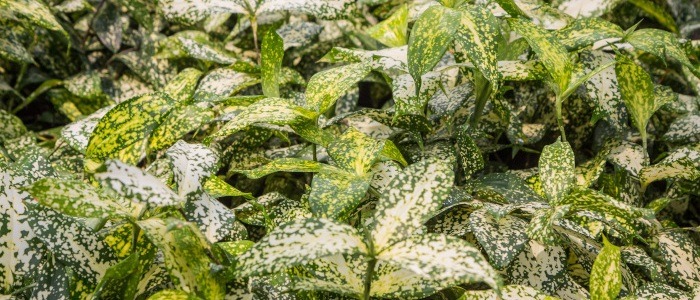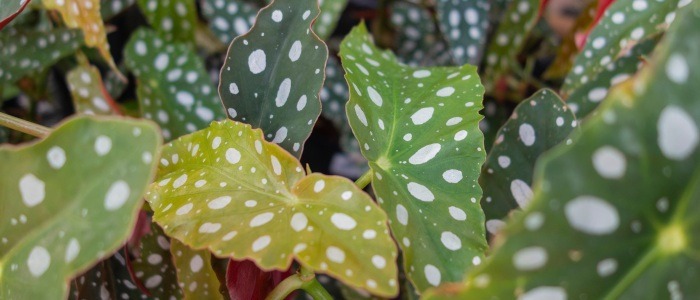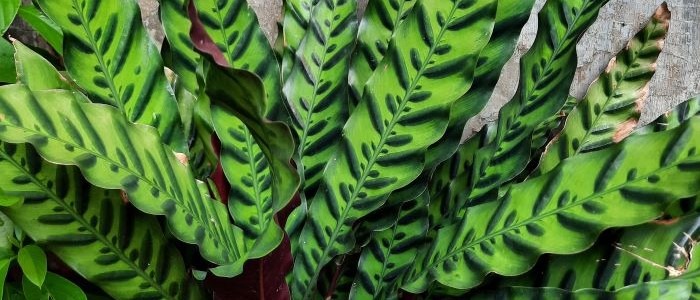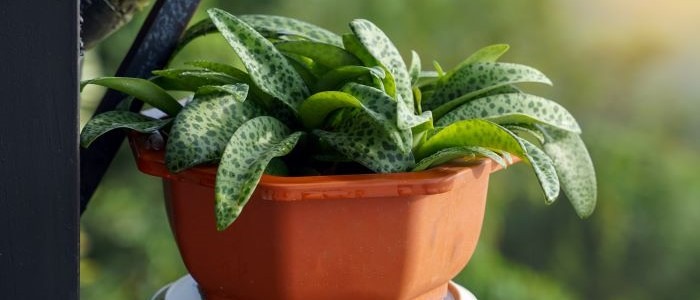The Mother in Laws Tongue plant (Sansevieria trifasciata) is a resilient and easy-to-care-for evergreen perennial that has been a favorite houseplant for many years. It is native to Africa, Madagascar, and some parts of the Middle East and is known for its stiff, upright leaves that can grow several feet tall and wide. The leaves are usually solid green but there are many cultivars of this plant with variegated leaves, adding an extra pop of color to any room or garden.
Due to its hardy nature and low-maintenance requirements, the Mother in Laws Tongue needs minimal care to thrive. With proper watering, soil drainage, occasional fertilizing, pruning when necessary and adequate sunlight exposure it can make a great addition to any home or garden.
This plant’s adaptability also makes it ideal for novice gardeners as well as experienced ones alike. Its ability to withstand a variety of temperatures – from cold nights in the winter to hot days in the summer – makes it very versatile. Additionally, it can survive without direct sunlight but will benefit from indirect light if possible.
As long as you provide your Mother in Laws Tongue with adequate water and humidity levels at all times you should have no problem keeping your plant healthy and thriving!

Mother In Laws Tongue Frequently Asked Questions
Why is the snake plant called mother in law's tongue?
The snake plant or or Sansevieria is often called mother in law's tongue due to its long, pointed leaves that resemble a sharp tongue. It is also believe, that this nickname may stem from the fact that the plant is known for its resilience and ability to withstand neglect, much like a mother-in-law's ability to endure difficult situations
What is the best indoor location for the mother in laws tongue plant?
When deciding on the placement of your snake plant, it is important to consider its light requirements. Snake plants thrive in bright, indirect light, so choose a spot near a window that receives a moderate amount of sunlight throughout the day. As for the mother-in-law's tongue plant, it is known for its tolerance of low light conditions. This makes it a versatile choice for various indoor locations, including areas with limited natural light such as hallways or corners away from windows
Identifying Mother in laws Tongue (Sansevieria Trifasciata)
Identifying a Mother in Laws Tongue (Sansevieria trifasciata) is relatively easy. The most recognizable feature of this plant is its long, sword-shaped leaves that are dark green with lighter bands running across them. These leaves can be anywhere from 1 to 8 feet long and the width of them can range from 0.5 to 4 inches wide. Additionally, there will be rhizomes growing horizontally below the soil surface.
In spring or summer, the Mother in Laws Tongue may also produce small white flowers on tall stems that reach about 3 feet high. This flowering process often requires more care than usual as it requires higher humidity levels and adequate drainage for the potting mix in order to ensure successful blooming.
The Mother in Laws Tongue is classified as a monocotyledonous flowering plant, meaning it produces only one seed leaf when germinating from a seed. It is also known as a succulent plant due to its ability to store water in its thick leaves for extended periods of time without withering away easily.
To identify this plant you should look out for its upright sword-shaped leaves and rhizomes that grow below the soil surface. Furthermore, pay attention to its small white flowers in spring or summer which require more care than usual such as higher humidity levels and proper drainage for the potting mix if they are expected to bloom successfully.
Choosing a Suitable Growing location for Mother in laws Tongue
Choosing the right location for your Mother in Laws Tongue (Sansevieria trifasciata) is essential for its health and growth. This plant thrives in indirect light, so it should be kept away from direct sunlight. While this plant can tolerate a wide range of temperatures, it does best when the temperature stays between 60-80°F (16-27°C).
Keep the plant away from cold drafts or any areas with rapid changes in temperature. Additionally, moderate humidity levels are important to keep in mind when selecting a suitable location – too much or too little humidity can have a negative effect on your plant’s growth.
In terms of watering and soil drainage, you’ll want to make sure that you provide your Mother in Law’s Tongue with regular watering and adequate drainage for the potting mix you use. Overwatering can cause root rot, so make sure not to water your plant too often or too much. To ensure proper drainage, select a potting mix that is rich in organic matter or create a DIY mixture using soil, compost, and sand.
Finally, make sure to find an area where there is plenty of air circulation around your Mother In Law’s Tongue as this will help prevent disease and pest infestations. With the right conditions, your Mother in Laws Tongue will thrive!
Caring for Your Mother in laws Tongue Plant
Caring for your Mother in Laws Tongue (Sansevieria trifasciata) plant is relatively easy and requires minimal maintenance. With proper attention, your plant will thrive and live a long life. Here are some tips to help you keep your Mother in Laws Tongue healthy and happy:
Watering: Keeping the soil of your Mother in Laws Tongue evenly moist but not soggy is essential for its health. Water about once a week, ensuring that the entire root system is saturated. If the potting mix remains soggy for too long, it can lead to root rot or other diseases. Additionally, make sure to allow the top few inches of soil to dry out between waterings.
Fertilizing: During the growing season, it is important to fertilize your Mother in Laws Tongue monthly with an all-purpose liquid fertilizer diluted by half or a slow-release fertilizer formulated for houseplants. This will provide it with additional nutrients that are not naturally found in soil and help ensure healthy growth throughout its life.
Light: Providing bright, indirect light is essential for keeping your Mother in Laws Tongue healthy. Ideally, choose an area with plenty of air circulation and avoid direct sunlight as this can burn its leaves. However, if you find that its leaves are losing their vibrant color or becoming overly thinned out then they may need more light exposure.
Repotting: As time goes on, roots may grow beyond the walls of their pot and require repotting into a larger container with fresh potting soil every two years or so. Repotting can be done during springtime when new growth starts to appear or whenever the roots appear overcrowded within their current container.
Pruning: Occasionally check for yellowed or damaged leaves on your plant; if any are present then prune them away using sterilized garden shears or scissors as soon as possible. Pruning should be done regularly to keep plants looking neat while also promoting healthy growth throughout their lifetime!
With these simple tips, you’ll be able to maintain a beautiful and thriving Mother in Laws Tongue (Sansevieria trifasciata) plant! Not only does this hardy perennial look great indoors or outdoors but it also boasts numerous health benefits due to its ability to purify indoor air quality while helping reduce stress levels when placed near windowsills or desks!
Propagating Mother in Laws Tongue (Sansevieria trifasciata)
Propagating Mother in Laws Tongue (Sansevieria trifasciata) is a simple and straightforward process that can be done in a few different ways. Division involves splitting the mother plant into multiple sections and potting them separately. This method works best when the rhizomes of the original plant are thick, which makes it easier to separate them into distinct sections.
To do this, first carefully dig up the entire Mother in Laws Tongue plant and gently pull apart its thick rhizomes until you have several distinct sections. Then, replant each section into a separate pot filled with fresh soil and water thoroughly. Stem cuttings are also an effective way of propagating your Mother in Laws Tongue.
To do this, cut off a stem section from the original plant using a sterile knife or scissors, making sure to include at least one or two leaves on it. Once removed, let it dry out for about 24 hours before placing it in fresh potting mix and watering regularly. As long as you provide adequate light exposure and humidity levels, new leaves will soon start sprouting from the stem cutting!
Leaf cuttings are also possible with Sansevieria trifasciata plants; however they must be done carefully as any damage to the leaf could prevent new growth from occurring. To propagate with leaf cuttings, use a sterile knife or scissors to remove an entire healthy leaf from your Mother in Laws Tongue plant. Place the leaf on damp soil so that the bottom portion of it is touching the soil surface and keep moist at all times until roots begin to form. Once established, new plants will start growing at each node along the length of the leaf!
Propagating Mother in Laws Tongue is an easy process that requires minimal effort but yields great results! With these simple steps, you can easily propagate your Mother in Laws Tongue and enjoy its beauty for many years to come!
Mother in laws Tongue Common problems and solutions
Mother in Laws Tongue (Sansevieria trifasciata) is a resilient and easy-to-care-for evergreen perennial that requires some basic care to keep it healthy and thriving. However, there are certain common problems that may arise when caring for this plant. In this section we’ll take a look at how to identify and address incorrect watering, nutrient deficiencies, direct sunlight, root rot, and pest infestations.
Incorrect Watering: Mother in Laws Tongue does not need too much water, but it does require regular watering. It’s important to make sure the soil is damp but not soggy. If the soil is kept too wet or dry for too long, it can cause the leaves to yellow or wilt. To remedy this issue, make sure you are providing consistent amounts of moisture by using a spray bottle or watering can. Additionally, you should ensure adequate drainage by using pots with multiple drainage holes or making sure the potting mix has plenty of pebbles at the bottom of it for extra aeration and drainage.
Nutrient Deficiencies: Another potential problem with caring for your Mother in Laws Tongue is nutrient deficiencies caused by poor soil quality or lack of fertilization. To prevent these deficiencies from occurring, use a high-quality potting mix with plenty of organic matter such as compost or peat moss mixed in with perlite and vermiculite for extra aeration and drainage. You will also want to ensure you fertilize regularly using an all-purpose liquid fertilizer at half strength every two weeks during spring and summer months when your plant is actively growing; just be careful not to overfertilize as that can lead to leaf burn.
Direct Sunlight: Although Sansevieria trifasciata prefers indirect light, direct sunlight can cause scorching on its leaves if left exposed for too long each day. To avoid this problem altogether, simply make sure your plant is placed in an area where it won’t receive more than four hours of direct sunlight each day—preferably under sheer curtains near a window with filtered light coming through them instead of bright drapes that will block out any natural light from entering your room altogether.
Root Rot: Root rot is another common problem associated with Mother in Laws Tongue that occurs due to overwatering combined with inadequate drainage conditions. To prevent root rot from occurring make sure you are providing consistent amounts of water without allowing the soil to become soggy, as well as proper aeration and drainage through use of pots with multiple holes at the bottom as well as pebbles added into the potting mix itself; if you do notice signs of root rot occurring (such as wilted leaves or discoloration), then immediately repot into fresh new soil while removing any affected roots before doing so—that way you can save your plant before any further damage takes place!
Pest Infestation: Common pests such as aphids may occasionally find their way onto Sansevieria trifasciata plants; however they are generally easy to get rid of without having to resort to chemical solutions thanks to its tough exterior skin which helps protect it from most insect predators! The best way to get rid of these pests involves simply wiping down each leaf individually using either soapy water or rubbing alcohol on cotton swabs until they have been eliminated completely—just be sure not let either solution sit on the plant’s leaves for too long otherwise you risk burning them! Additionally try increasing air circulation around your plant by positioning it away from other objects in order reduce chances insects will even find their way onto them in first place!
Caring for a Mother in Laws Tongue (Sansevieria trifasciata) doesn’t have to be difficult; all it takes is some basic knowledge about how best care for this resilient evergreen perennial! With these tips about how identify incorrect watering patterns,, detect nutrient deficiencies,, shield against direct sunlight,, prevent root rot,, and eliminate pesky pest infestations,, caring for your beloved Mother in Law’s tongue has never been easier!
Conclusion
The Mother in Laws Tongue (Sansevieria trifasciata) is an easy-to-care-for evergreen perennial that can bring a unique touch to any home. Not only is it an attractive houseplant, but it can also be used to naturally filter toxins from the air. Whether you are looking for a splash of color or want to add some greenery to your living space, this plant is sure to do the trick.
When caring for a Mother in Laws Tongue, it is important to consider the potential toxicity of this plant and keep it out of reach of pets and children. To ensure proper growth, regular watering should be provided along with adequate drainage for the potting mix. Additionally, find an area with plenty of air circulation to prevent diseases and pest infestations. With these simple steps, you will have a resilient and easy-to-care-for evergreen perennial thriving for many years to come!
Propagating Mother in Laws Tongue (Sansevieria trifasciata) is an easy and straightforward process that can be done in a few different ways. Division involves splitting the mother plant into multiple sections and potting them separately; stem cuttings involve cutting off a stem section from the original plant; and leaf cuttings involve carefully removing an entire healthy leaf from the plant and placing it on damp soil until roots form and new plants start growing. With these simple steps, you can easily propagate your Mother in Laws Tongue!
To get creative with your Mother in Laws Tongue, incorporate it into terrariums or larger planters as a centerpiece. You can even try out different arrangements such as pairing it with succulents or adding other colorful plants nearby! With the right amount of sunlight and water, your Mother in Laws Tongue will provide years of beauty and air purification while bringing life to your home.
Other Spotted House Plants






